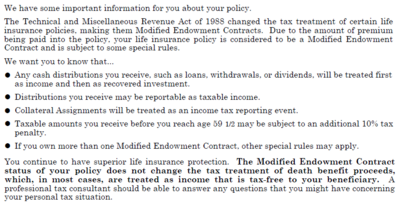- 5,044
if you are a RIA, you can 1035 the cash value in to no surrender fee deferred annuities and collect your AUM fee
How would that help the client by moving their once fully taxable qualified money that they rolled to an IRA, then paid tax to put it in a WL for beneficial tax reasons to then 1035 exchange it to one of the worst taxed products when you die. I can see if you are saying "for those clients that need to use the funds for guaranteed lifetime income". But for those that don't need it, a NQ annuity can be one of the worst choices compared to a paid up life policy or an after tax bond/equities account that currently gets a step up in basis at death

